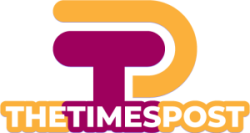Organizations today are increasingly opting to use software for managing human resources. When choosing it, care should be taken to pick one that scales with the company.
Ideally, an HR software that offers features like employee self-service and employee help desk should be chosen as it imparts a lot of convenience to both employees and the employer.
Given below are ten crucial modules that should be present in this software.
1. Recruitment
Software that has a robust recruitment module assists in creating the database of the talent that is integrated into the company. It allows the creation of advertisements, handles, applications, and administers all documents. Thus, it saves time and eliminates the redundancy of processes.
2. Onboarding
Many new employees find it daunting to engage with the management. The onboarding module acquaints the recruits with crucial onboarding requirements. It helps them to discover all essential company and employer-related data in a single platform.
3. Performance Management
Tracking every employee’s performance is critical. performance management software gives robust monitoring features. It also provides a system that contains comprehensive performance-related information. The information can be used to help managers decide on salary increases, which can all be generated on an online paystub generator.
4. Administration
This module handles all the information about employee benefits. Everything from tax benefits to welfare, healthcare, and other options related to finance is managed in this module.
5. Workforce Management
This module operates with that of Customer Relationship Management (CRM) and Enterprise Resource Planning (ERP). An employee’s leave schedule and records of attendance are vital. They are lined with the workforce management to ensure its effective running.
6. Absence and Leave
The leave schedules are automated with this module. It makes the task of booking, tracking, and approving time off easy.
7. Time and Attendance
Its essential components include timings, irregularities, biometric data, and attendance. It tracks employee attendance and keeps data protected for any future reference.
8. Learning and Development
Through this module, member-specific training, booking, and feedback are operated. It also automates the procedure of assigned budget and training expenses.
9. Talent Management
This module aids HR during recruitment. It consists of new talent information and details like work experience, academic qualifications, and training taken.
10. HR Analytics
This module integrates with other modules and produces reports that impart a bigger picture of the entire performance. It also gives appropriate steps and favorable estimations for the company to make decisions.
Here are the must-have features in a human resources software:
1. Data Management
It consists of employees’ complete data like leave management, medical details, and payroll information. It ensures that HR possesses a complete employee record.
2. Job Opening Management
It includes data for existing vacancies like job descriptions, skills needed, and the number of job vacancies in various departments.
3. Application Management
It consists of records and contact details of applicants, their interview progress, audit records, and the employment form.
4. Company Documents Management
This feature covers company information like legal documents, holiday lists, policies, and insurance details.
5. HR-Related Documents
This feature handles employee and applicant data in PDFs and makes sure that data is transferred securely.
6. Project Management
This functionality enables a company to assess the effectiveness of its project later on. It thus facilitates it to arrive at suitable data-driven decisions about the project.
7. Employee Termination
It handles employee process checklist management, generation of the process beginning, its measurement, and the like and ensures that all of them are properly executed by the software.
8. HR Checklist
A great HR software provides a checklist with in-build activities and functionality to make additions to the list. It, in turn, ensures that the daily activities are sent timely.
9. Shared Database
This feature enables employees to fill in the data regarding their leaves, work hours, and the like. It is done through a login developed especially for the staff.
10. Safety Management
The software is operated under high-level protection. The data is sent and received in encrypted form.
The HR functions, when automated can impart organizations a great degree of efficiency. Hence, organizations must invest in software that contains those modules and features that make employees’ lives easier.



